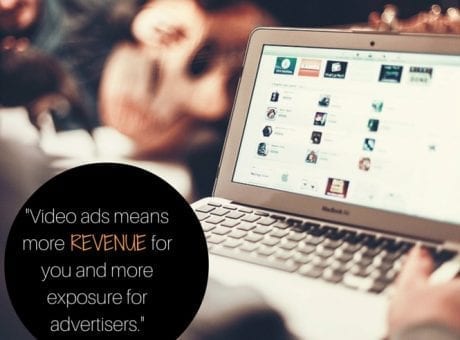The Online Video Gold Rush
The gold rush of online video advertising has ensued in full force—the buzz, energy and frenzy have pushed online video mainstream. Now most major digital publishers and broadcasters offer online video ad formats.
ReadThe $80 Billion Sales Opportunity
In October 2006 Google acquired YouTube. Only one year later the firm wrote off the investment, signaling it was a mistake. But this initial difficulty was a false warning. Fast forward 10 years, and investors believe YouTube alone generates $4.9B in video ad revenue. This is encouraging news for every other media company and publisher. Why? Because there is no question that an outsider can come in with compelling content, and sell video advertising. They can completely change the game.
ReadTV Spending Moving Over to Digital
Linear TV ad spending is projected at $66B in 2016. With digital stealing away TV ad spending dollars, 2 questions remain; how much money has shifted already from TV to digital and why? As it stands, $1.5B had already shifted from TV to digital in 2015. Despite this being a less than 3% of the projected $66B, this demonstrates how much opportunity is left in this market. But, it's important to understand the factors that contributed to the already present shift from TV to digital amounting to $1.5B:
ReadTraditional Broadcasters vs. Cable Sites: Are there “best practices” when it comes to online video advertising?
Since the emergence of online video, advertisers have been testing the water with which lengths are the most profitable , and yet, nothing seems to be concrete just yet in the world of online video advertising. However, we are capable of uncovering trends regarding video length already set by traditional national broadcaster and cable networks. Here's what we can report on so far:
ReadWhat does adopting Google’s Accelerated Mobile Pages really mean for publisher’s?
Google has introduced a product that is in its beginning stages called Google AMP (Accelerate Mobile Pages). However, despite its effectual benefits towards mobile users and advertisers, there are already existing concerns within the publishing world with the arrival of this tool.
ReadAutomakers Use Advertising to Drive Sales
We were so excited to work with MediaPost’s Marketing Daily to discuss our data regarding the state of auto sales. What we found out was fascinating and right up our alley! It turns out, auto companies boosted their digital spend this year, increasing their online advertising behavior. All six automakers increased their online advertising, here’s the breakdown: GM placed on 68% more sites, FCA-80%,Nissan Motor-90%, Honda-73%, Toyota-67%, and Ford, coming in the lead with a whopping online ad boost of 97%. Read the full article here where MediaRadar CEO, Todd Krizelman, discusses how automakers increased their online presence through native advertising.
ReadMediaRadar is compared to ‘legal’ insider trading
On August 10, 2015, New York Post compared our ad tracking software to what one would consider insider trading–except legal! After Wall Street professionals got wind of our tool, an advertising tracking tool capable of predicting how well a company will fare at a given time, they started warming up to the idea of MediaRadar.
ReadProgrammatic native: Tragedy of the commons?
An emerging new trend in native advertising combines the value of native with the easy placement of programmatic. But who is this favorable for?
ReadA Response to Brian Colbert’s Native Advertising Op-Ed in Digiday
Brian Colbert’s op-ed in Digiday about defending native advertising’s premium value gets the message right: if publishers get caught up in the hype, native’s value could go the way of the banner – and take a lot of hard-won brand trust with it. Just how close are we to this adpocalypse? The answer is in the data.
Read


